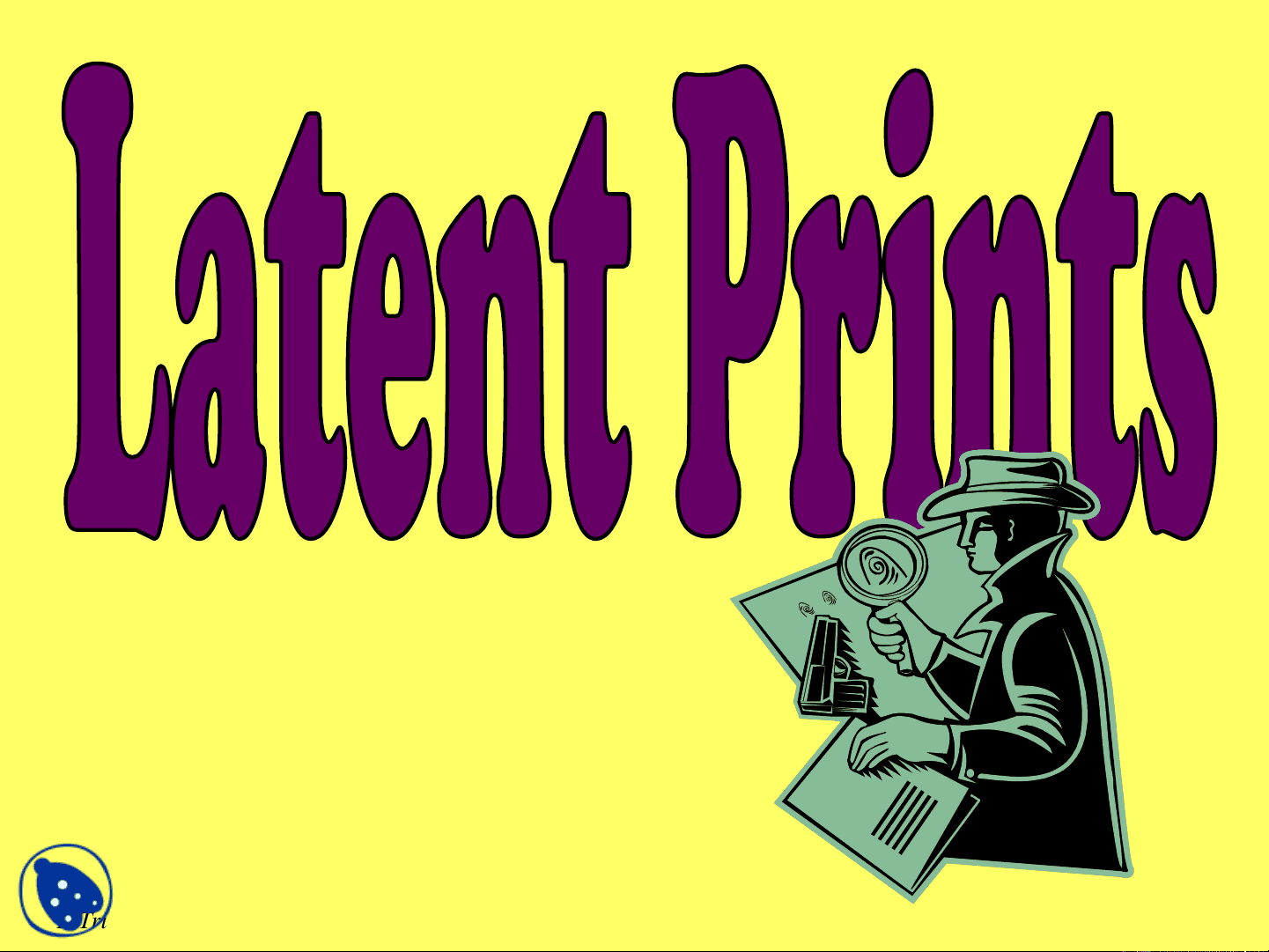
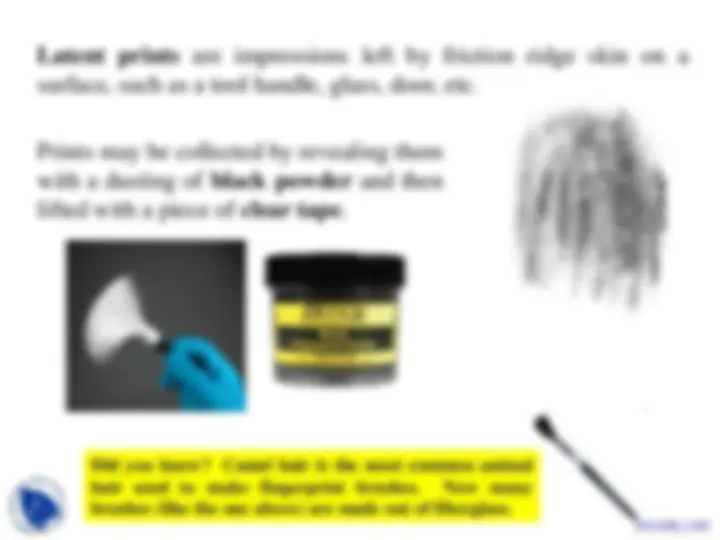
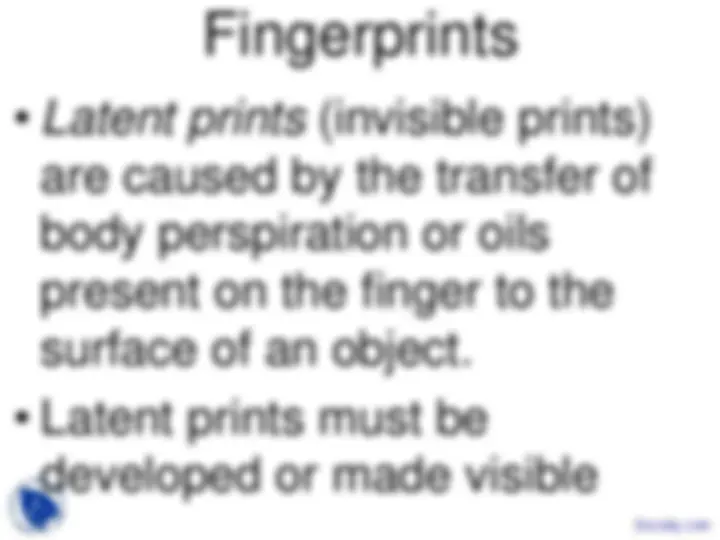
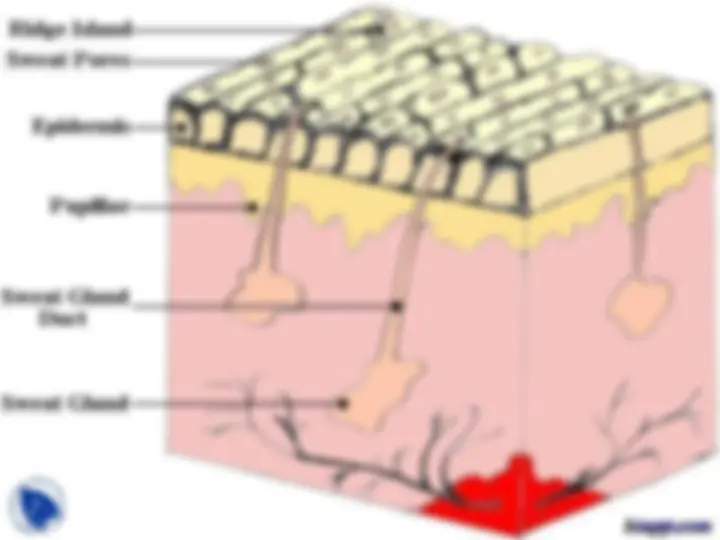
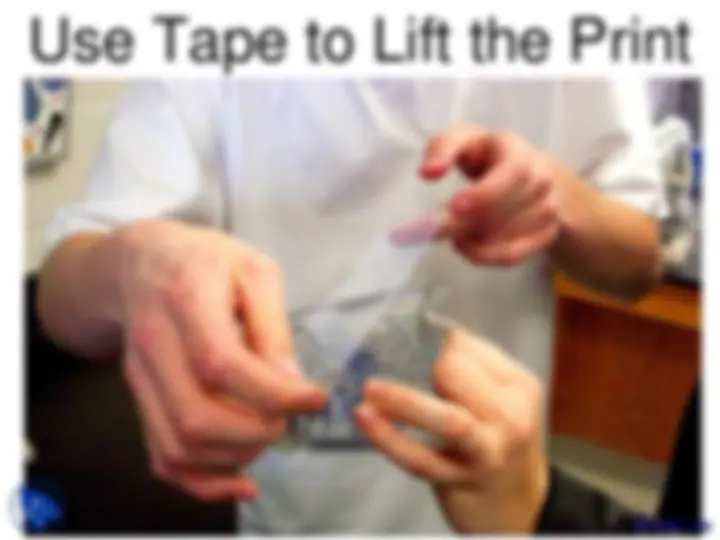
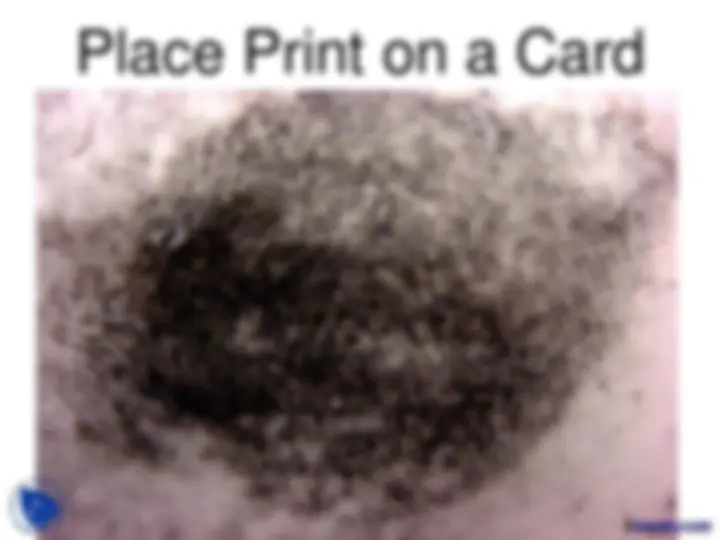
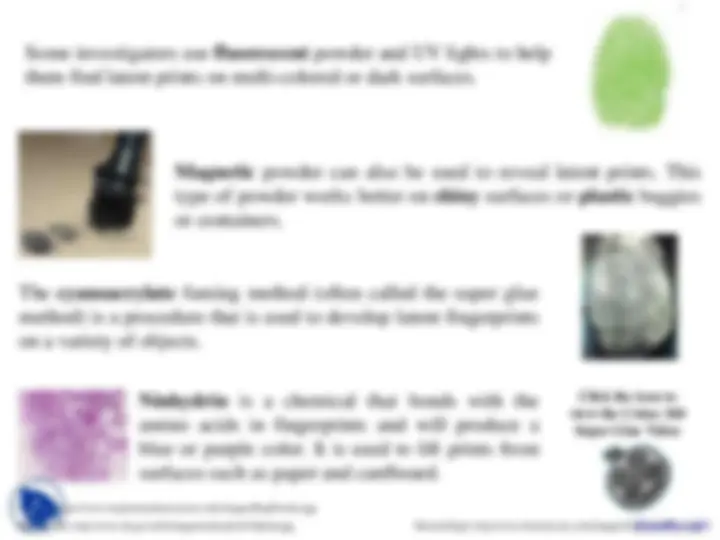
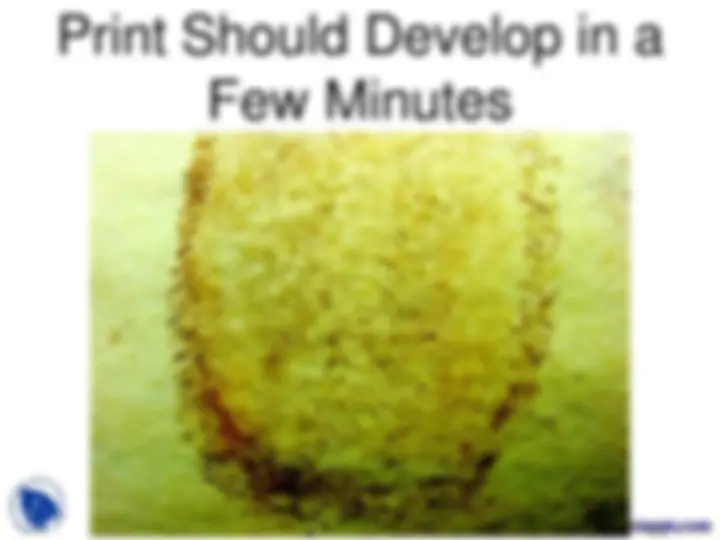
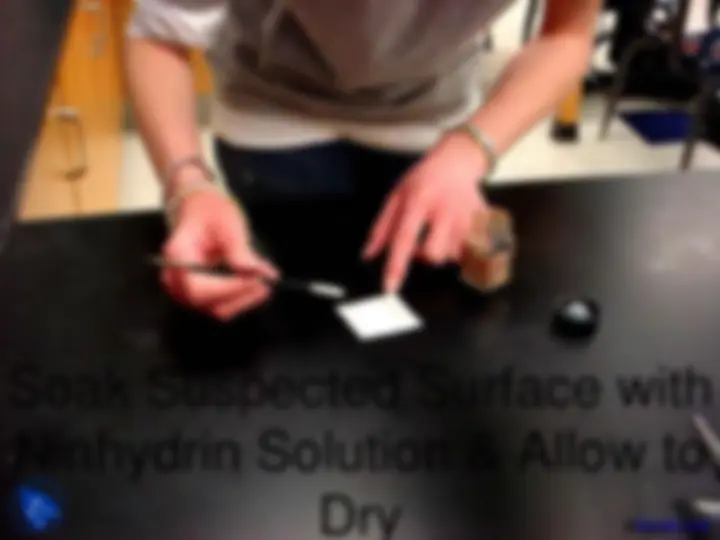
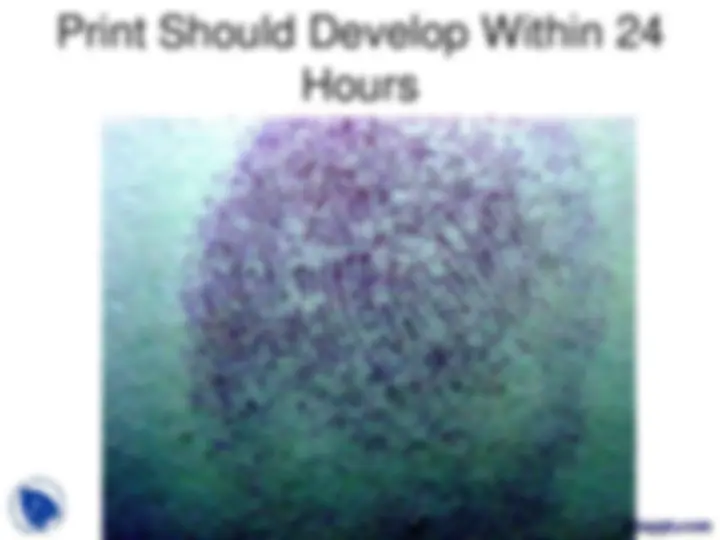


Study with the several resources on Docsity

Earn points by helping other students or get them with a premium plan


Prepare for your exams
Study with the several resources on Docsity

Earn points to download
Earn points by helping other students or get them with a premium plan
Community
Ask the community for help and clear up your study doubts
Discover the best universities in your country according to Docsity users
Free resources
Download our free guides on studying techniques, anxiety management strategies, and thesis advice from Docsity tutors
An overview of fingerprint analysis, focusing on the collection and development of latent prints. It covers various types of prints, including visible, plastic, and latent prints, and the methods used to reveal and lift them. The document also mentions the use of different powders, such as black powder, magnetic powder, and cyanoacrylate fuming, as well as chemicals like iodine and ninhydrin. Students will learn how to properly collect and develop fingerprints for forensic analysis.
Typology: Slides
1 / 17

This page cannot be seen from the preview
Don't miss anything!










T. Trimpe 2007 http://sciencespot.net/ Docsity.com
Docsity.com
bsapp.combsapp.com Docsity.com
bsapp.com Docsity.com
bsapp.com Docsity.com
The cyanoacrylate fuming method (often called the super glue method) is a procedure that is used to develop latent fingerprints on a variety of objects.
Bottom Right: http://www.forensicsrus.com/images/SupergluePrint.jpg
Magnetic powder can also be used to reveal latent prints. This type of powder works better on shiny surfaces or plastic baggies or containers.
Top Left: http://www.stapletonandassociates.com/images/MagPowder.jpg Bottom Left: http://www.ok.gov/osbi/images/ninhydrin%20print.jpg
Click the icon to view the Crime 360 Super Glue Video
Some investigators use fluorescent powder and UV lights to help them find latent prints on multi-colored or dark surfaces.
Ninhydrin is a chemical that bonds with the amino acids in fingerprints and will produce a blue or purple color. It is used to lift prints from surfaces such as paper and cardboard.
Docsity.com
bsapp.com Docsity.com
Print Should Develop in a
Few Minutes
bsapp.com Docsity.com
Soak Suspected Surface with
Ninhydrin Solution & Allow to
Dry bsapp.com Docsity.com
1 - Cover your table with white butcher paper or newspaper. You must dust everything on the paper!
2 - Get a lifting kit from your teacher that contains black powder, brushes, and clear tape.
3 - Press the pad of your right thumb on a CD or glass slide to make a print. Place on the paper covering your table.
4 – Dip a brush lightly into the container of black powder and then tap off the extra on the lid. You only need a very small amount of powder to dust the print.
5 – Hold the brush over the print and rotate it between your thumb and fingers. Use the brush to remove any extra powder.
6 - Use a small piece of clear tape to lift the print and place it in the box on your worksheet.
CAUTION: The black powder will be messy and isn’t easy to clean up. Don’t dust anything without permission!
Docsity.com
Docsity.com